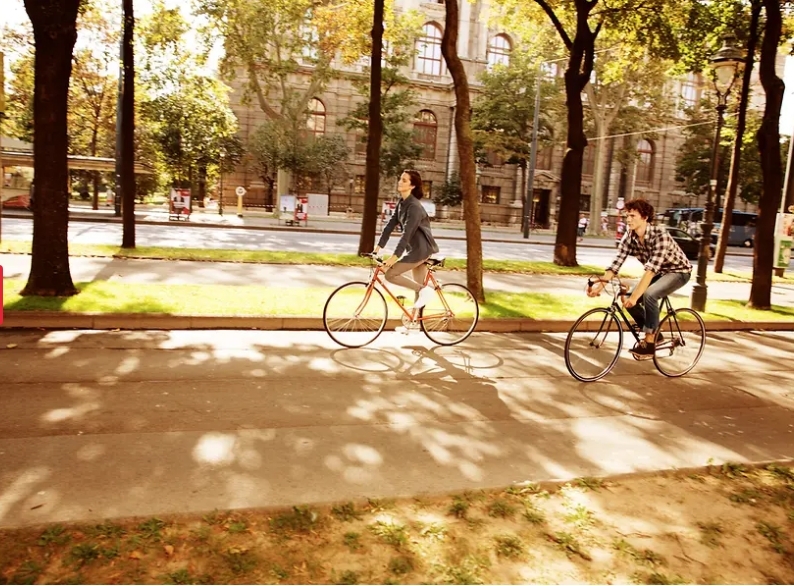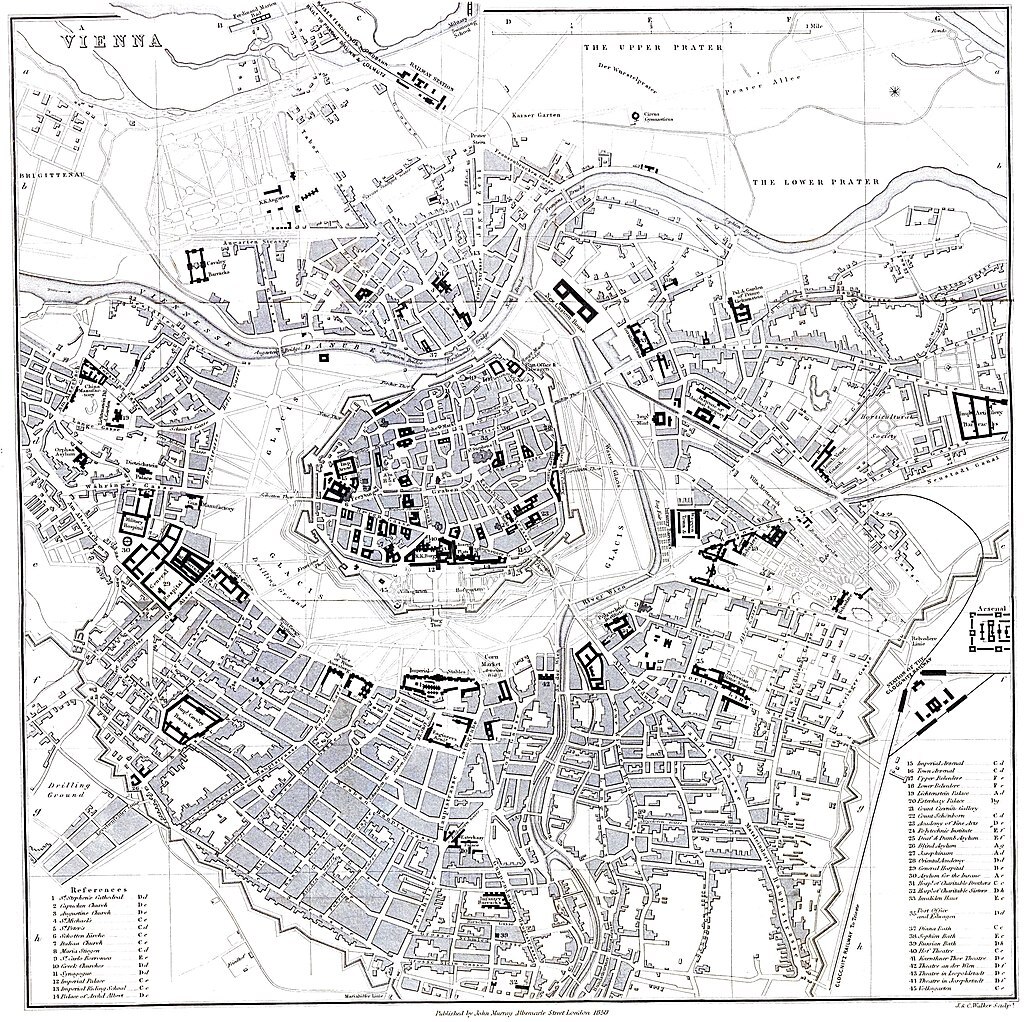
The Ringstrasse is one of the most prestige boulevards in Europe, and forms a natural border between the centre of our city, and six neighbouring districts, though the zweier Linie is the actual mark separating those parts of town. It is best-known for its glorious architecture, including the Staatsoper, Hofburg, University and MAK. Not all of these buildings were loved when they were new, but are now known around the world. Many international architects came to work on this massive, disruptive project, including Gottfried Semper from Germany, and Theophil Hansen from Denmark.
It has changed a lot, and yet most of the construction was complete by 1890, meaning these people in 1895 would recognise the street even today. It makes us modern viewers nervous to see so many people walking in the middle of the road, between trams, in this film from 1906 (before traffic lights were invented). Unusually, for a Vienna street, it has room for many trees, and is often closed to cars. With all of its noble palaces, it is a reminder of the inequality in the city at that time, which is part of the explanation for the rise of antisemitism under mayor Lueger.
While most Whoosh events are neither historic, nor central, here we show our connections with the beating heart of the Donaumetropole. Eugene has made a special Media Coffeehouse Conversations in Cafe Landtmann (for Wien Tourismus) & the regular version in Cafe Ministerium, a conference presentation in Uni Wien (on whether Wien is still a just city?), was DJ and hosted a Hotel industry conference in Hotel Kempinski, visited Ringstrasse 23 on the Otto Wagner 12-hour tour for Wien Museum, looked at Palais Ephrussi on the Brexit tour, been DJ for a special walking festival on Rathausplatz, and also presented on how to get your walking story into the media (for Walk 21 conference in Rathaus), brought the Goethe, Sisi, Grillparzer and Lueger statues to life on the Speaking Statues tour for WKW, presented for a BMK seminar in NHM on the value of urban walking, organised the Silly Walks Contest for StreetLife Festival on Babenbergerstrasse, played some loud opera music on the Russian Echoes in Wien tour at Staatsoper, Marriott hotel used to feature on Vienna Ugly, along with Strauss Denkmal, Eugene presented a Pecha Kucha slide show on Vienna semiotics, and also a quality of life explanation for Metropole Museum, both in MAK, and played only ecological songs to save the world, in Urania, for a BMK innovative climate communications awards ceremony.

The style in which the buildings were built went down in history as the Ringstrasse style (a type of Historicism). It is marked by a pluralism of styles: numerous architectural forms of previous epochs were imitated.
And the origin of this tour was a request from Manchester University Design School for a tour in March 2024, all round the Ring, for 80 students and 10 lecturers. Tourists love this part of town, but few Viennese have ever walked all the way along the Ring (5.3km). So we will do just that, and hopefully surprise you with new perspectives on a familiar place.

Some curious ideas: what is Historicism, why is the Ring in fact a Kipferl shape, and no ring?, what happened to all those obscure national airlines who used to have offices on this proud street?, why do no trams ride all the way round the Ring?, why did one of the two Oper architects kill himself six months after the building opened, and why is there a Scottish part of the Ring?
At the half-way point, we will sit for a coffee and cake in Cafe Schwarzenberg. and recreate some of the salon atmosphere of that moment in our city's history. Few of the original grand cafes remain on this street - often replaced by expensive hotels, like Grand Ferdinand, Amauris and Almanac, which few Viennese ever visit. While Londoners go for cocktails and glamorous parties in big hotels, the Viennese find these places expensive, soulless and irrelevant. indeed many residents rarely go into the centre of their home town, viewing it as a Disneyland zone for tourists. Wrong!
Construction of the Ring happened along with massive growth of the city, with our population doubling to 2 million people in just 40 years (in 1900). As illustrations of the disastrous situation for ordinary Viennese, consider that this was the TB capital of Europe, that many people were forced to rent a bed for just six hours, and then to leave the bed for somebody else - so not even a room belonged to them. 11% of women were forced into prostitution, to feed their children, or themselves. Most of the builders were migrants from across the empire, and often slept on their building site. Women and children were also employed as even cheaper labour on construction of these world famous palaces and administration houses. Many Austrians are alarmed by migration numbers now - just look at the recent election result - but in those days fully 65% of the city were from places not speaking German, and with different religion, culture and education.
The context is so important, because this was also the moment when the world was looking at Wien for avant garde new thinking, on music, psychoanalysis, writing, art and architecture.
As a measure of how resonant this single street was, Rotes Wien dubbed its fine social housing along the Margaretnergürtel in the 1920s the Ringstrasse des Proletariat.
In many cities, the ring road is a dull, practical street to avoid the city centre, but Vienna took a different approach. A medieval wall, built in the 13th century to defend the rich city from outsiders, was symbolically transformed into a message about the modern city, open, pretty and inviting.
The nine individual names for parts of the Ring have changed, and remain controversial. We celebrate that the Rainbow Parade in June takes up the entire street, as a message of inclusion, respect and progress. See you in June for another tour on this theme. Many other more problematic demonstrations also occur here.
The official opening happened on 2 May 1865, by Emperor Franz Josef, so our walk coincides with an important anniversary. Happy 160th Birthday to our most famous road! Almost everything inside the Ring is protected by Unesco as World Cultural Heritage, which is very problematic, as you will discover on the tour. We have so much to talk about, that 5 hours will seem not enough!